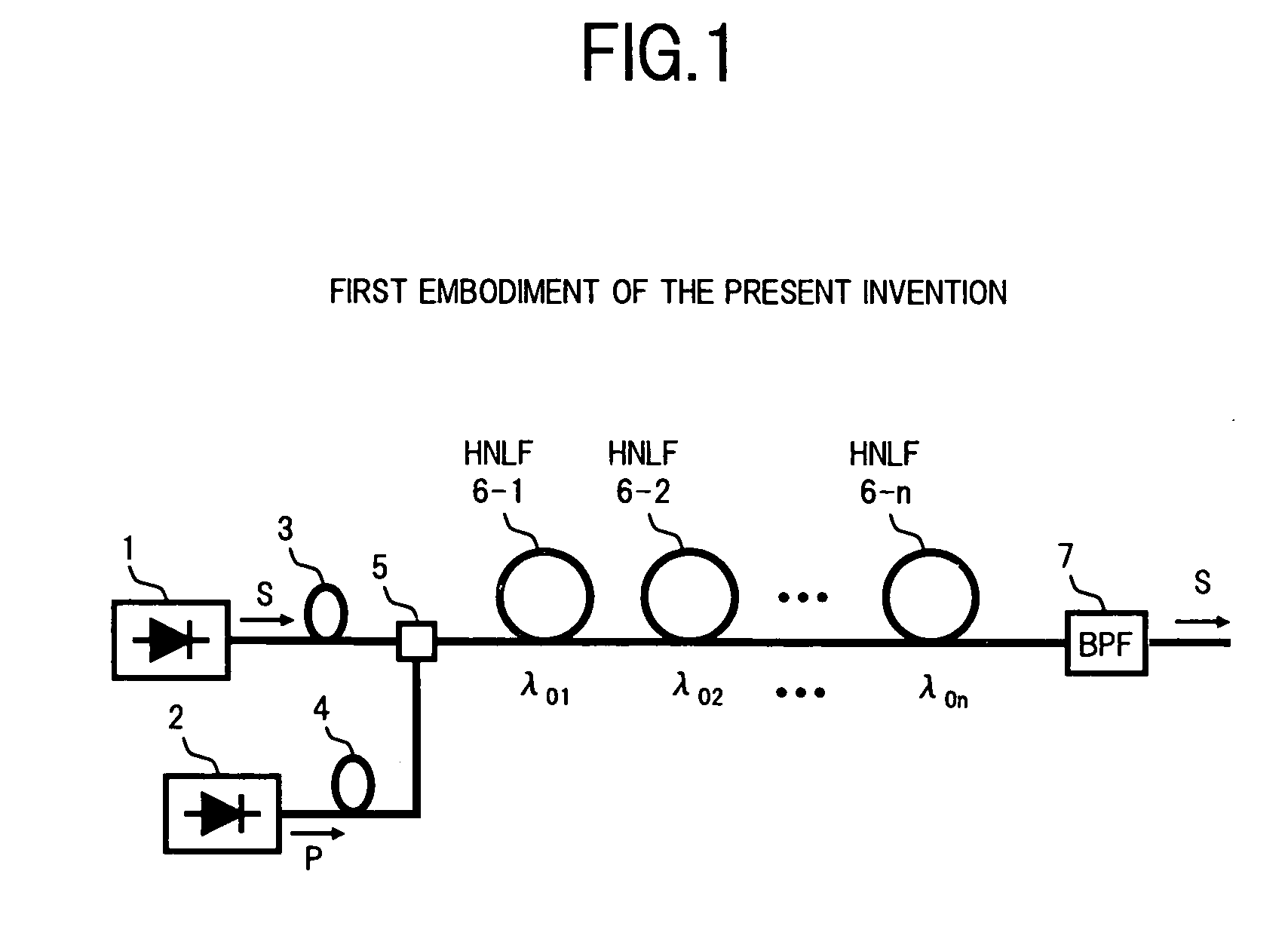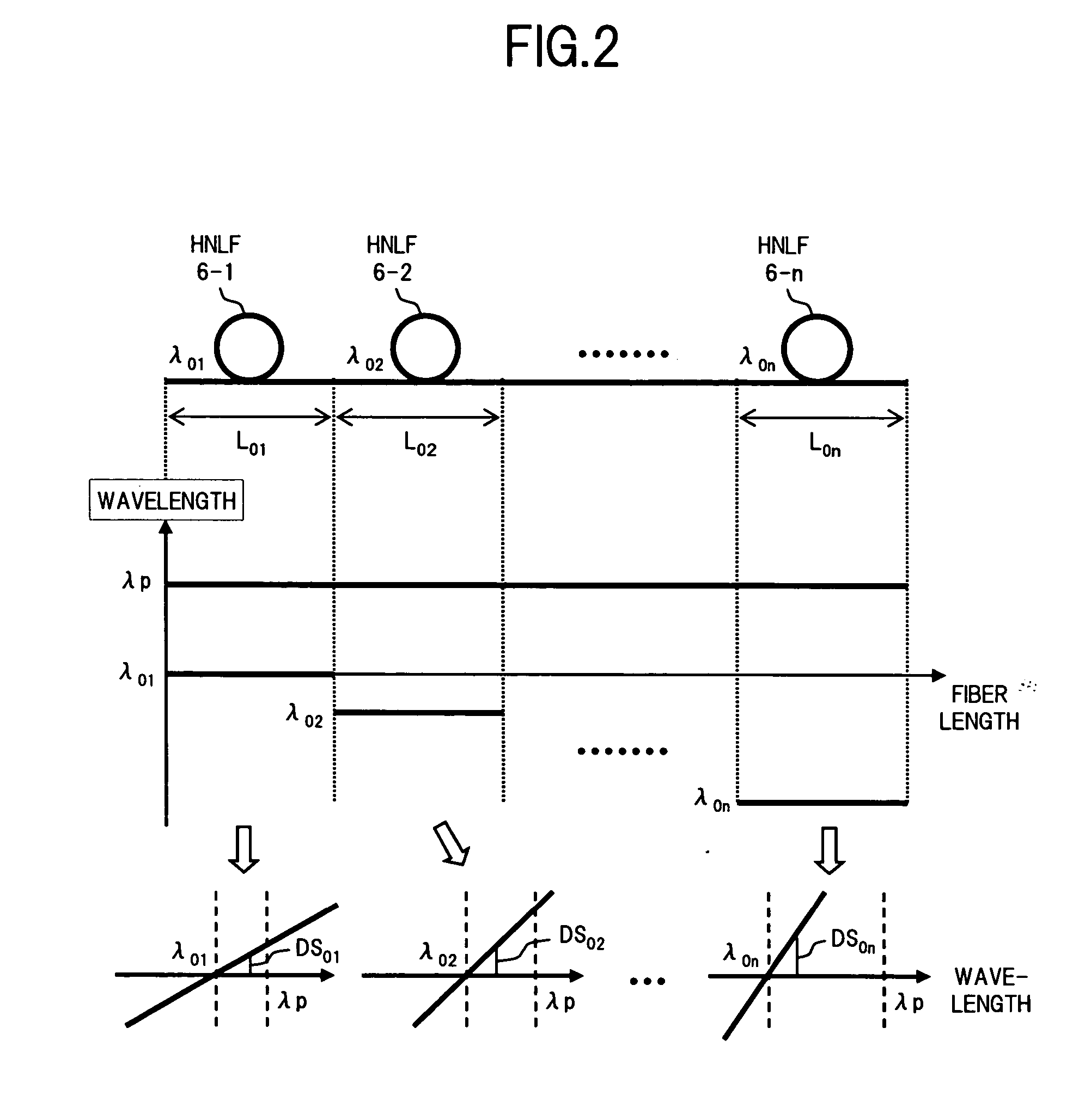Optical parametric amplifier
- Summary
- Abstract
- Description
- Claims
- Application Information
AI Technical Summary
Benefits of technology
Problems solved by technology
Method used
Image
Examples
first embodiment
[0038]FIG. 1 is a diagram showing the structure of an optical parametric amplifier according to the present invention.
[0039] In FIG. 1, an optical parametric amplifier of the present embodiment comprises, for example: a signal light source 1 which generates a signal light S; a pump light source 2 which generates a pump light P; polarization controllers 3 and 4 serving as polarization control devices; a coupler 5 which combines the signal light S and the pump light P; n polarization retaining highly nonlinear optical fibers (hereunder referred to as HNLF) 6-1, 6-2, to 6-n, serving as a nonlinear amplifying section; and an optical bandpass filter 7 serving as a signal light extraction section.
[0040] The signal light source 1 generates a signal light pulse S with a high-speed bit rate, in accordance with the OTDM system for example, and outputs the signal light S to the polarization controller 3. Here, an example is shown in which the signal light source 1 is provided in the optical p...
second embodiment
[0060] Next is a description of the present invention.
[0061]FIG. 6 is a diagram showing the structure of a second embodiment of an optical parametric amplifier according to the present invention.
[0062] In FIG. 6, an optical parametric amplifier of the present embodiment comprises n multi stage HNLFs 6-1 to 6-n, wherein m (16-1 to 6-m from among the n HNLFs 6-1 to 6-n in the structure of the first embodiment shown in FIG. 1 are connected in series, n-m HNLFs 6-m+1 to 6-n are connected in series, and the HNLFs 6-1 to 6-m and the HNLFs 6-m+1 to 6-n are connected in parallel by a coupler 8 and a coupler 9. The arrangement is set such that the zero-dispersion wavelengths λ0 to λ0m and λ0m+1 to λ0n of the HNLFs 6-1 to 6-m and 6-m+1 to 6-n become shorter towards the later stages of the HNLFs similarly to the case of the first embodiment, and there are relative relationships of λ01>λ02> . . . λ0m and λ0m+1>λ0m+2 . . . >λ0n. Furthermore, the arrangement is set such that the dispersion slope...
PUM
 Login to View More
Login to View More Abstract
Description
Claims
Application Information
 Login to View More
Login to View More - R&D
- Intellectual Property
- Life Sciences
- Materials
- Tech Scout
- Unparalleled Data Quality
- Higher Quality Content
- 60% Fewer Hallucinations
Browse by: Latest US Patents, China's latest patents, Technical Efficacy Thesaurus, Application Domain, Technology Topic, Popular Technical Reports.
© 2025 PatSnap. All rights reserved.Legal|Privacy policy|Modern Slavery Act Transparency Statement|Sitemap|About US| Contact US: help@patsnap.com



